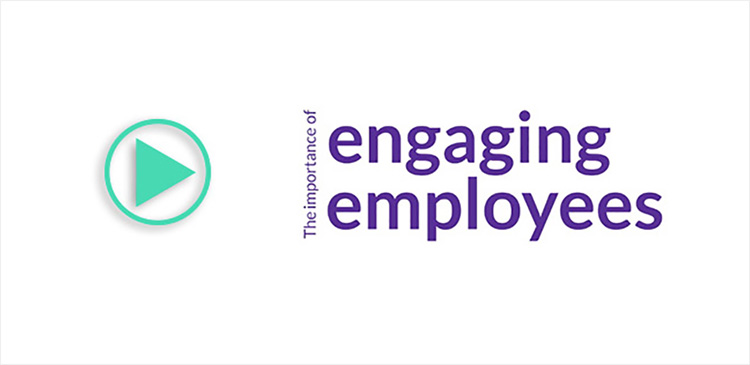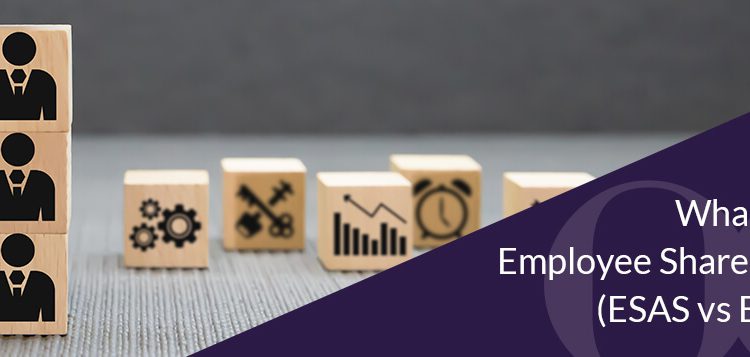Based on reports from a survey conducted by Workday and published on Human Resource Directors, Singapore’s job market currently has an expected turnover rate of 46% per annum, the highest across Asia Pacific. Given this alarming statistic, employment retention is key for companies to grow and maintain a competitive advantage with their best minds running the entity with in-depth, industry specific skills and experiences. To attack this issue effectively, we are seeing a surge in companies adopting an Employee Share Plan (ESP). As a result, not only are employees retained, they are also incentivized to work towards company’s objectives and not of their own.
An Employee Share Plan is essentially a remuneration package, where employees are rewarded with company’s ordinary shares, either by subsidy or free of charge, after certain performance criteria have been fulfilled. Some examples of an Employee Share Plan include Employee Share Award Scheme (ESAS) and Employee Share Purchase Plan (ESPP). In this article we will discuss each in detail to demonstrate their differences.
Employee Share Award Scheme (ESAS)
This plan is usually given to directors or upper level management, where the employee is rewarded with ordinary shares of the company, if they fulfill certain criteria or performance metrics set forth by the company. Initially, the participant (director or senior manager) will be allotted X number of restricted shares. At each vesting period (usually annually), a proportion of the allotted shares will be vested and become unrestricted shares, where the participant can then enjoy the benefits of owning an actual share (i.e. Sell, Voting Right, Dividend Pay-out). The number of shares to be vested and turned into unrestricted shares, will depend on the participant’s performance during their evaluation period.
There are two types of ESAS, namely a Performance Share Plan (PSP) and a Restricted Share Plan (RSP). They can be summarized as follows:
| Types of ESAS | Plan Duration | Vesting Period | Performance Metric | Participant | Target Companies |
| PSP | 3-5 Years | End of Plan (With Annual Evaluation) | – Total Shareholder Return – Return on Equity – Return on Sales – Market Ranking | – Directors – Non-Executive Directors – Senior Manager – Head of Department | – Listed Companies (Including Mainboard and Catalist) |
| RSP | 3 Years | Annually | – EBITDA – Economic Value Added |
Case Study 1: Restricted Share Plan (RSP)
Jack Li (Employee of Jack Manufacturing Company) has recently joined the Jack Manufacturing Company Restricted Share Plan (RSP), where he was allotted 1,000,000 shares on 1st April 2020. The RSP plan spans across a 3-year duration with 2 vesting periods. The first vesting date is 2nd April 2022, where 50% of the allotted shares will be vested and become unrestricted shares, based on Mr. Li’s performance from 2nd April 2020 until 1st April 2022. The second vesting date is on 2nd April 2023, where the remaining 50% of the allotted shares will be vested, depending on his performance from 2nd April 2020 till 1st April 2023. His results are summarized as follows:
| Vesting Period | 2nd April 2022 | 2nd April 2023 |
| Performance Metrics | 95% | 100% |
| Vested | 450,000 | 500,000 |
| Unvested | 50,000 | 0 |
| Total Awarded | 450,000 + 500,00 = 950,000 | |
Upon the first vesting period, Jack only managed to reach 95% of his pre-set target, therefore, the Remuneration Committee (RC) decided to vest only 450,000 shares, of the allotted 500,000 shares for that time period. The remaining 50,000 shares will either be placed back in Jack Manufacturing Company’s treasury account or to be evaluated again towards the second vesting period. For the purpose of this example we will assume that the unvested 50,000 shares are being placed back into Jack Manufacturing Company’s treasury account for simplicity.
Upon the second vesting period, Jack performed well and managed to reach his target, thereby having all 500,000 shares vested accordingly.
In conclusion, Jack has a total of 950,000 Jack Manufacturing Company’s ordinary shares by end of 2nd April 2023, that he can either sell it or keep. If he chooses to keep the shares, he will enjoy voting rights and receive dividend payment as and when due.
Companies who adopt such a plan usually aim to ensure that shorter term (i.e. Annual) goals are being met and satisfied. As opposed to PSP, where longer term goals are the focus, see below for this case study.
Note: As a rule, companies will only allot shares up to 15% of company’s current outstanding ordinary shares at any time, to all its eligible participants, to prevent overpowering of any form.
Case Study 2: Performance Share Plan
Sarah Perry (Employee of Jack Manufacturing Company) recently joined the Jack Manufacturing Company Performance Share Plan (PSP), where she was allotted with 1,000,000 shares on 1st April 2020. On an annual basis, she will be evaluated and will be given a score card. The average of all scores spanning across 3 years, will determine the final number of ordinary shares awarded. It is worth pointing out that the scores she receives in one particular year will not affect her scores of other years.
Her results are summarized as follows:
| Evaluation Date (Annually) | 2nd April 2021 | 2nd April 2022 | 2nd April 2023 |
| Score Card | 95% | 110% | 65% |
| Average score across 3 years | (95% + 110% + 65%) / 3 = 90% | ||
| Total Awarded | 1,000,000 x 90% = 900,000 Ordinary Shares | ||
In conclusion, Sarah has a total of 900,000 Jack Manufacturing Company’s ordinary shares by the end of 2nd April 2023, that she can either sell or keep.
Note that in some companies, a Claw-back Policy may be introduced. This policy will require the individual to return a certain number (if not, all) of the rewarded ordinary shares, should the performance achieved be deemed unsustainable, for a set number of years post the PSP Plan.
Companies who adopt such plans usually aim to ensure that longer term goals are being materialised, as opposed to RSP, where shorter term goals are the focus. In addition, such policy will incentivise the individual to constantly reflect and improve on the strategies adopted, to ensure sustainable performance for the long haul.
Employee Share Purchase Plan (ESPP)
This plan is offered to all employees of the company. The company will effectively subsidize employees in purchasing ordinary shares of the company.
On a monthly basis, a portion of the participant’s (employee) gross income will be automatically deducted and placed in a separate account (sitting with the company) for a minimum period of one year. By end of the year, the participant either has the option to use those funds to purchase ordinary shares, or have it transferred back to participant’s own account. To incentivize participants to partake in this scheme, companies would offer an advantageous interest rate, for the funds being set aside. Therefore, there is benefit to the employee even if they don’t proceed with purchasing the company’s ordinary shares. There are also other cases where companies will subsidize 25% of the total cost spent by the participants when making the share purchase. Some companies would even use their own funds to purchase x ordinary shares, for every x number of ordinary shares purchased by the participants.
Conclusion
Different types of plans will serve companies of different sizes and nature. But the core purpose remains the same, which is to retain the best minds, drive long term growth and be the market’s next game changer.
Find out more on the key benefits of having an Employee Share Option Plan (ESOP) or learn about the challenges of ESOP implementation and how to conquer them.
Looking For A Trusted Employee Share Plan Firm In Singapore?
We have designed an all-rounded encompassing solution comprising of an experienced Share Plan team of practitioners and a digital solution to help you manage your strategic initiative.
01 Learn more about EmployeeServe - our Employee Plan Services platform!

Contact us today to find out more about our class-leading solution.
Or you can also learn more about our Employee Stock Option Plan (ESOP) services here.





